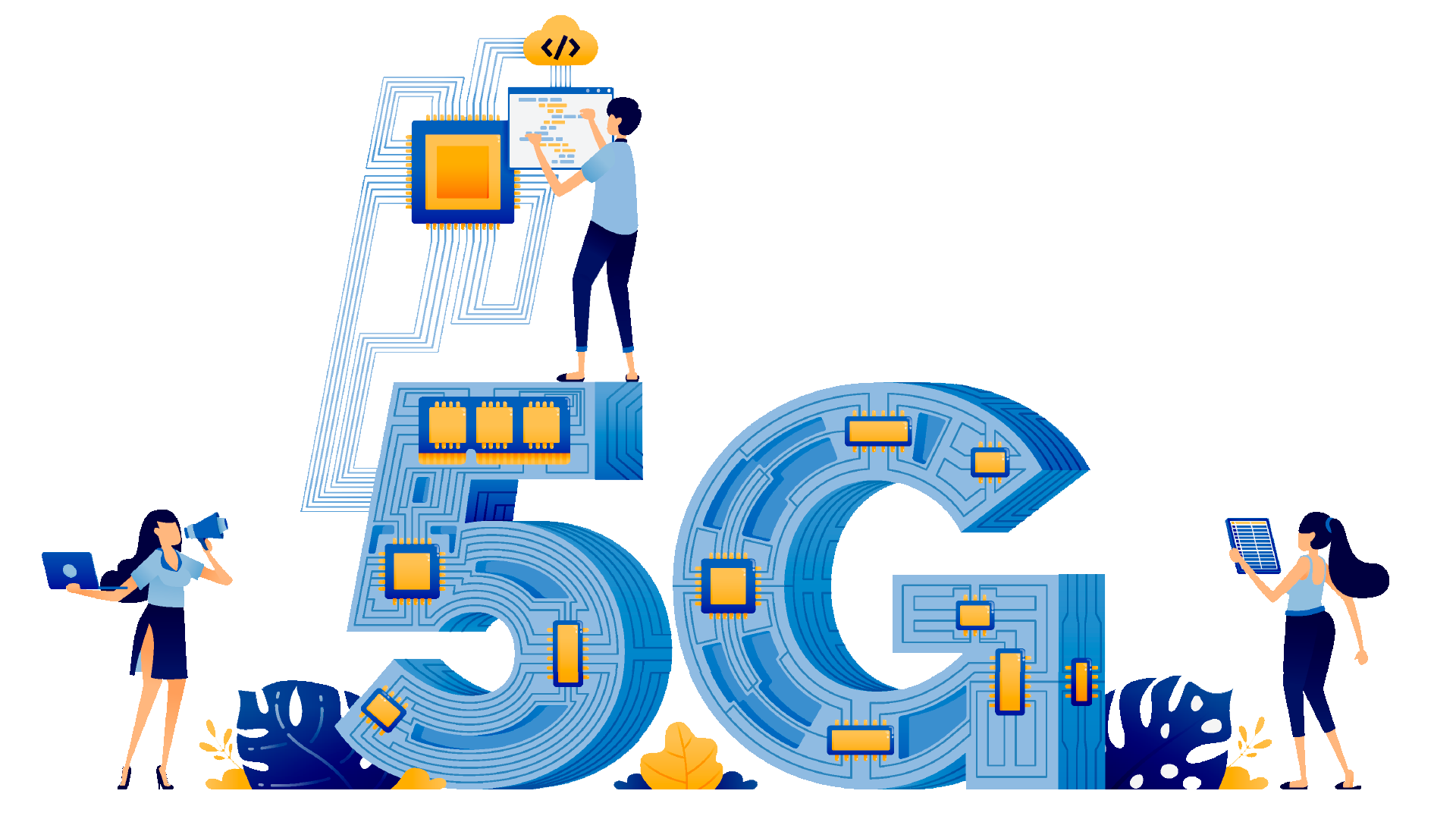5G technology is poised to revolutionize the way programmatic advertising operates, providing faster data transfer speeds, increased targeting accuracy, and real-time insights. With the global 5G market expected to reach $250 billion by 2026, it’s crucial for B2B companies to understand the impact of 5G on programmatic advertising and how they can maximize its benefits while overcoming any potential challenges.

The Benefits of 5G for Programmatic Advertising:
Faster Data Transfer Speeds:
This technology offers data transfer speeds that are up to 100 times faster than 4G, allowing for real-time data transfer and real-time insights into campaign performance. This improved speed means that advertisers can receive and analyze data from their campaigns at a much faster rate, allowing them to make quick adjustments and optimizations in real-time. For example, if a particular ad is performing poorly, advertisers can quickly adjust targeting parameters or creative elements to improve performance. This improved speed also makes it possible for advertisers to access data from connected devices, such as smartphones and smart homes, in real-time, providing even greater insights into consumer behavior.
Increased Targeting Accuracy:
With 5G, companies will be able to collect and process large amounts of data in real-time, enabling them to more accurately target their audiences and deliver more relevant advertising experiences. 5G also enables advertisers to access and analyze data from a wide range of connected devices, providing a more complete view of consumer behavior and preferences. For example, advertisers can use data from connected cars to better understand consumer behavior during commute times, or data from smart home devices to understand consumer behavior in the home. With this increased data availability and processing power, advertisers can create more targeted and effective campaigns, leading to higher conversion rates and a better overall user experience.
Improved User Experience:
This new way to connect will allow for more seamless and immersive advertising experiences, such as virtual reality and augmented reality. This can lead to increased engagement and conversions for programmatic advertising campaigns. With 5G, virtual reality and augmented reality experiences can be delivered in real-time, without the lag and buffering that can detract from the user experience. This improved user experience can lead to increased engagement and interaction with advertisements, which can ultimately drive conversions.

Challenges and Solutions for 5G in Programmatic Advertising:
Privacy Concerns:
One of the biggest challenges associated with the adoption of 5G technology for programmatic advertising is privacy. With the increasing amount of data being collected and processed for programmatic advertising, privacy concerns will become increasingly important. Companies will need to ensure that they are compliant with privacy regulations and have robust data privacy policies in place. This can include implementing secure data storage solutions, using encryption technologies, and ensuring that data is only used for authorized purposes. Additionally, they need to be transparent with consumers about the data they collect and how it is being used, and provide consumers with control over their data.
Integration with Existing Systems:
Companies will need to ensure that their existing programmatic advertising systems are able to integrate with 5G technology to take full advantage of its benefits. They may need to upgrade their systems or implement new technologies such as edge computing and multi-access edge computing to ensure seamless integration. This can be a complex and time-consuming process, but it is important for companies to make the necessary investments to ensure that their systems are fully 5G-compatible.
Cost:
Implementing 5G technology can be expensive, and companies will need to carefully consider the costs and benefits before investing. They may need to allocate more budget to technology and infrastructure to fully leverage the benefits of 5G for programmatic advertising. However, the long-term benefits of 5G, such as improved campaign performance and increased targeting accuracy, can more than make up for the initial investment costs.
In conclusion, the integration of 5G technology into programmatic advertising holds numerous potential advantages, such as lightning-fast data transfer rates, advanced targeting precision, and more engaging user experiences. However, the transition will also present obstacles that must be addressed, including privacy concerns, compatibility with current systems, and the cost of implementation.
To overcome these challenges, business can look towards new technologies such as blockchain for privacy and security solutions, or partner with companies that specialize in 5G integration to ensure seamless implementation. They can also invest in advanced data analytics tools to take full advantage of the real-time insights provided by 5G.
It’s important to note that not all companies will benefit equally from 5G technology, as the benefits will depend on factors such as industry, target audience, and marketing objectives. Despite these differences, for companies that are able to successfully leverage 5G technology, the results can be significant, including increased engagement and conversions, as well as improved efficiency and cost-effectiveness in their programmatic advertising efforts.
Want to know more? Get in touch with us

